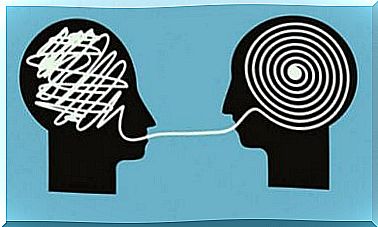Somatoform Disorders: Symptoms And Treatment

Somatoform disorders shed light on the difficulty of separating the effects that the body and mind have on a person’s health. The strong connection between these two dimensions prevents the diagnosis and treatment of this type of disease.
Before we continue, it is important to differentiate them from psychosomatic disorders. Although both types have a psychological starting point with physical symptoms, psychosomatic disorders include damage to the physiological system, while somatoform disorders have not shown physical, organic disease.
Therefore, it is a somatoform disorder when there are physical symptoms without organic or physiological diseases. Furthermore, this symptomology includes certain psychological conflicts.
People, with this type of disease, make their symptoms the center of all attention in their lives. Their discomfort can even engulf them in their daily activities. In many cases, however, their concern is not proportionate to their actual symptoms.
Excessive symptom enlargement
As mentioned earlier, patients with somatoform disorders show physical symptoms, but the origin is mental. They come with great worry, anxiety and difficulties in everyday life. The following points summarize their clinical picture:
- Excessive worry about their symptoms and / or intense emotional disturbance.
- Recurrent, constant and compulsive thoughts about the possible severity of the symptoms.
- Extreme anxiety about their health and the catastrophic consequences of their symptoms.
- Disproportionate amount of time and money spent on health issues.

Dependence
People can develop an addiction to others because of the almost chronic physical symptoms and the belief that their grief will have catastrophic consequences. Patients create a need for constant help. On the one hand, they abdicate responsibility, and on the other hand, they demand tremendous attention, help and support from the people around them.
In addition, they tend to get angry when they feel they are not getting the time or attention they think they deserve, or when their needs are not given enough importance.
They may experience strong emotional instability, which in severe cases can lead to suicide attempts. As you can read, somatoform disorders can be very serious if they are not detected early enough.
Hard to detect
What is the diagnosis for a number of diseases that do not show signs of physical illness? The answer to this question lies in the psychological aspect of the diseases. Therefore, in order to make a diagnosis, “there must be no evidence of anything bodily that can explain the symptoms” according to DSM-IV.
Still, doctors should not diagnose it as a mental illness even if they do not find any physical cause for the symptoms. First, they need to do a series of necessary tests.
Some people may also have an excessive reaction because they have a low pain threshold compared to others. Of course, this does not mean that they have a mental illness. In order to diagnose this type of disease, the doctor must first rule out the possibility of other physical or organic diseases.

Types of somatoform disorders
In order to characterize somatoform disorders, we need to pay attention to the reaction the patient has to their symptoms. In other words, anxiety, worry, and how it affects them in everyday life. Thereby we can distinguish between the different diseases (DSM-IV and ICD-10):
- Somatization: It is usually only discovered after several years. The symptoms can occur anywhere on the body, but the most common are in the abdominal region (pain, meteorism, vomiting, nausea, etc.) and skin problems (burning sensations, springs, redness). In some cases, there are also signs of depression and anxiety.
- Undifferentiated: Characterized by several physical disorders that are changing and persistent, but which have no explanation. This means that their symptoms are not enough to be able to diagnose somatization.
- Hypochondria: One of the more well-known types of somatoform disorders. The primary symptoms are worry and anxiety about developing or having one or more serious, progressive illnesses. The patient often categorizes normal or frequent sensations as extraordinary phenomena.
- Conversion: The symptoms appear in organs connected to the autonomic nervous system (cardiovascular, stomach and breathing). They can also manifest themselves in a combination of objective signs of hyperactivity (palpitations, sweating, redness and tremors) and other subjective and nonspecific signs.
- Pain: Characterized by intense pain that occurs primarily in conflicts or other problematic situations.
- Other: Sensory differences from somatoform disorders and related problems or stressful situations. For example, episodes of hysteria or cutting teeth.
Cognitive behavioral therapy
Although there are studies on the pharmaceutical treatment of pain, there is not enough scientific evidence to be able to give correct therapeutic recommendations. However, patients should seek psychotherapeutic help and especially cognitive behavioral therapy. This can help reduce the pain and anxiety associated with their symptoms.
Another effective treatment may be a focus on cognitive behavioral therapy and interpersonal therapy. This combination covers patients’ two primary characteristics: excessive evaluation of their own health and the poor way in which they communicate with others about their problems.
This type of disease is very prevalent in our society. However, we need not worry. In some cases, the physical symptoms are a product of a mental condition. As we mentioned at the beginning of the article, it is a result of the relationship between mind and body. The question we are left with is: Where does the line go that separates physical and mental symptoms?









